Starting Your Remodeling Journey
Embarking on a kitchen remodeling project is an exciting prospect that can transform your home. It’s a journey that requires careful consideration of your personal needs and financial limits. Before diving in, take a moment to evaluate your lifestyle requirements and establish a comprehensive budget.
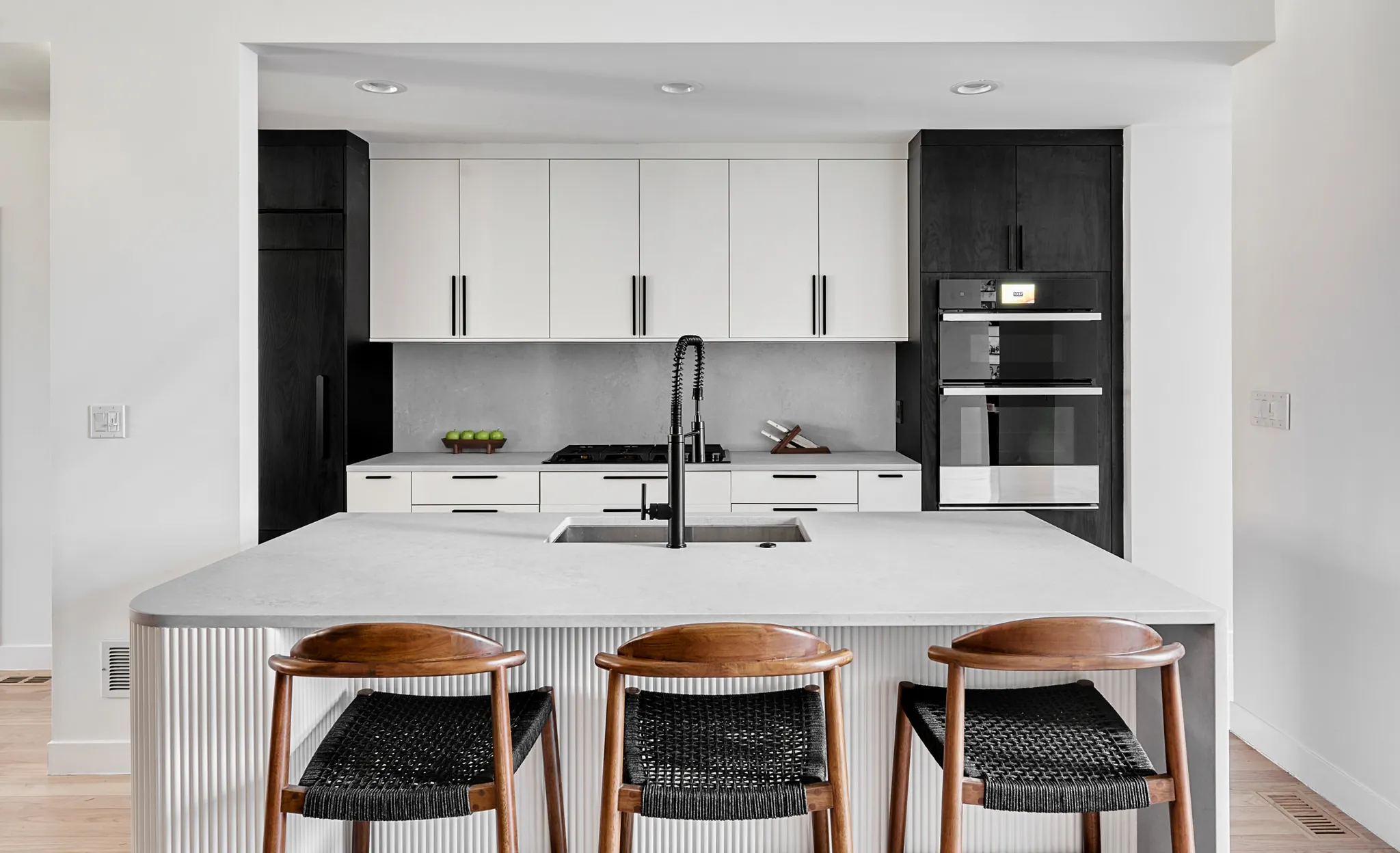
Assessing Your Needs
When considering a kitchen remodel, it’s essential to reflect on how you and your family use your current kitchen space. Ask yourself questions:
- What elements do you like about your current kitchen?
- Which features are lacking or need improvement?
- How does your family gather and move within the kitchen area?
Keep in mind your lifestyle needs and habits to ensure the new layout and design will be functional and practical for everyday use. Factor in your cooking routine, storage necessities, and traffic flow. Perhaps you require more counter space for food preparation, or you dream of a kitchen island for casual dining and entertaining. The objective is to tailor your kitchen to fit your specific behaviors and preferences.
Setting a Budget
Setting a realistic budget is crucial for the success of your remodeling venture. It should include all potential expenses such as material costs, labor, new appliances, and a contingency for unforeseen issues. To help you manage your finances effectively, create an itemized list of potential expenses. Here’s an example:
| Expense Category | Estimated Cost |
|---|---|
| Cabinetry and Hardware | $6,000 - $16,000 |
| Appliances | $4,000 - $10,000 |
| Countertops | $3,000 - $4,500 |
| Flooring | $2,000 - $5,000 |
| Labor | $6,000 - $15,000 |
| Miscellaneous (permits, etc.) | $1,000 - $2,500 |
| Contingency Fund (10-20% of total) | $2,000 - $4,000 |
All numbers are in $CAD. Source: Angi
Research various brands and price points, and consider both the initial investment and the long-term value. Determine if you’re updating existing elements like sinks, countertops, and cabinets, or if you’re planning for a comprehensive renovation. Be sure to consult with professional home renovators to obtain accurate estimates and advice on how to maximize your remodeling budget.
Remember, a kitchen remodel is not only about aesthetics but also about improving the functionality and efficiency of your space. By thoughtfully assessing your needs and setting a feasible budget, you’ll be well-prepared to create a kitchen that’s both beautiful and highly functional.
Planning for Functionality
When embarking on a kitchen remodeling project, the functionality of your space must be a top priority. Your new kitchen should not only look appealing but also cater to your lifestyle and daily routines. This means considering how the space will be used and ensuring the layout and appliances meet those needs effectively.
Optimizing Your Layout
A well-thought-out kitchen layout is the foundation of a functional cooking space. You’ll want to incorporate the work triangle principle, arranging the sink, stovetop, and refrigerator in a triangular formation for maximum efficiency. This setup minimizes foot traffic and ensures that key workstations are easily accessible.
Here are some typical layout options:
- L-Shaped: Ideal for small to medium-sized kitchens, providing an open area and reducing traffic through the work zone.
- U-Shaped: Offers ample counter space and storage, suitable for one or more cooks to work simultaneously.
- Galley: Efficient for narrow spaces, with workstations on two opposing walls.
When planning your kitchen’s layout, consider the following:
- Work Zones: Designate specific areas for prep, cooking, and cleaning to streamline tasks.
- Island Placement: If space allows, an island can serve as a multifunctional centerpiece for dining, preparation, and storage.
- Walkways: Ensure there’s enough room for easy movement, with at least 36 inches for walkways and 42-48 inches in cooking zones.
By carefully planning your layout, you can enhance the kitchen’s functionality, making meal preparation and entertaining more enjoyable. For more inspiration, explore various home renovation ideas that can complement your desired kitchen design.
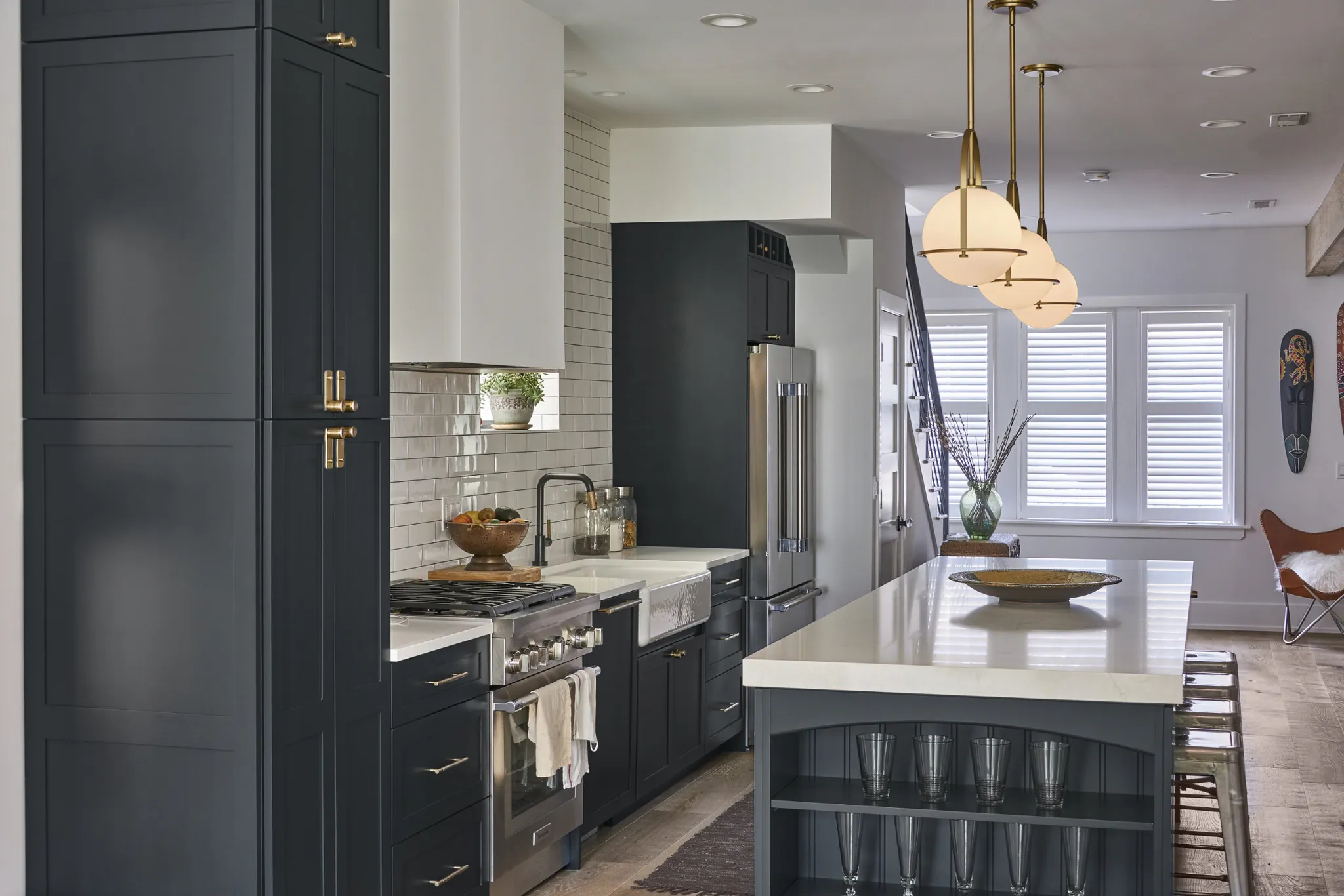
Choosing Appliances Wisely
Selecting the right appliances is crucial in a kitchen remodel. They should align with both your culinary habits and your budget. When choosing appliances, consider their sizes, finishes, features, and energy efficiency.
Begin by assessing the essentials:
- Cooking Surfaces: Whether you prefer gas, electric, or induction burners, your choice should reflect your cooking style.
- Ovens: Single or double? Wall-mounted or part of a range? Think about your baking and roasting needs.
- Refrigerators: Consider size and layout—French door, side-by-side, or top freezer models can offer different conveniences.
- Microwaves: Depending on usage, decide between a countertop or built-in model.
- Dishwashers: Look for models that offer flexibility in loading and water efficiency.
Here’s a simplified guide to help you start:
| Appliance | Consideration |
|---|---|
| Refrigerator | Capacity, layout, energy rating |
| Stovetop | Burner type, size, control |
| Oven | Convection or conventional, size, features |
| Dishwasher | Capacity, cycle options, noise level |
Keep in mind that appliances are long-term investments, so prioritize quality and efficiency. For a comprehensive guide on selecting appliances, consider consulting renovation contractors who can provide expert recommendations tailored to your needs and budget.
In conclusion, planning for functionality is about marrying practicality with personal preference. By optimizing your layout and choosing your appliances wisely, you’ll create a kitchen that’s not only a joy to look at but also a pleasure to cook in. And remember, whether you’re looking for a bathroom or condo renovation, functionality should always be at the heart of your home makeover.
Aesthetic Considerations
When embarking on your kitchen remodeling journey, aesthetic considerations play a critical role in transforming your space. It’s not only about the visual appeal but also about reflecting your personal style and creating a welcoming atmosphere in your home. Let’s explore the latest design trends, how to select a color palette, and the various cabinet styles and finishes that can elevate the heart of your home.
Current Design Trends
Kitchen design trends are constantly evolving, and staying informed can help you make choices that ensure your kitchen feels both modern and timeless. In 2024, Shaker-style cabinets, farmhouse sinks, and open shelving are at the forefront, providing a classic and cozy aesthetic that resonates with many homeowners. These elements combine functionality with a homely charm, making them enduring choices for your remodeling project.
Mixing metals has also become a stylish choice for adding depth and visual interest to kitchen designs. Incorporating brass and matte black finishes can add a touch of sophistication and modern flair. For those who appreciate traditional craftsmanship, the revival of artisanal finishes adds personality and character to the kitchen, with handcrafted elements becoming a notable trend in 2025.
Consider incorporating some of these design elements to ensure your kitchen remains on-trend:
- Shaker-style cabinets
- Farmhouse sinks
- Open shelving
- Mixed metal finishes
- Artisanal touches
Source: HGTV
Selecting a Color Palette
Choosing the right color palette is essential in setting the mood for your kitchen. While white kitchens have been a long-standing favorite due to their clean and bright feel, there’s a shift towards more colorful cabinets. Shades such as navy, emerald green, and even black are becoming popular choices, offering a bold statement and depth to kitchen spaces.
When selecting your color palette, consider the following popular hues for kitchen cabinets:
- Navy
- Emerald Green
- Black
- Classic White
These shades can be complemented by neutral tones or pops of color through backsplashes, countertops, and accessories to create a cohesive and inviting kitchen environment.
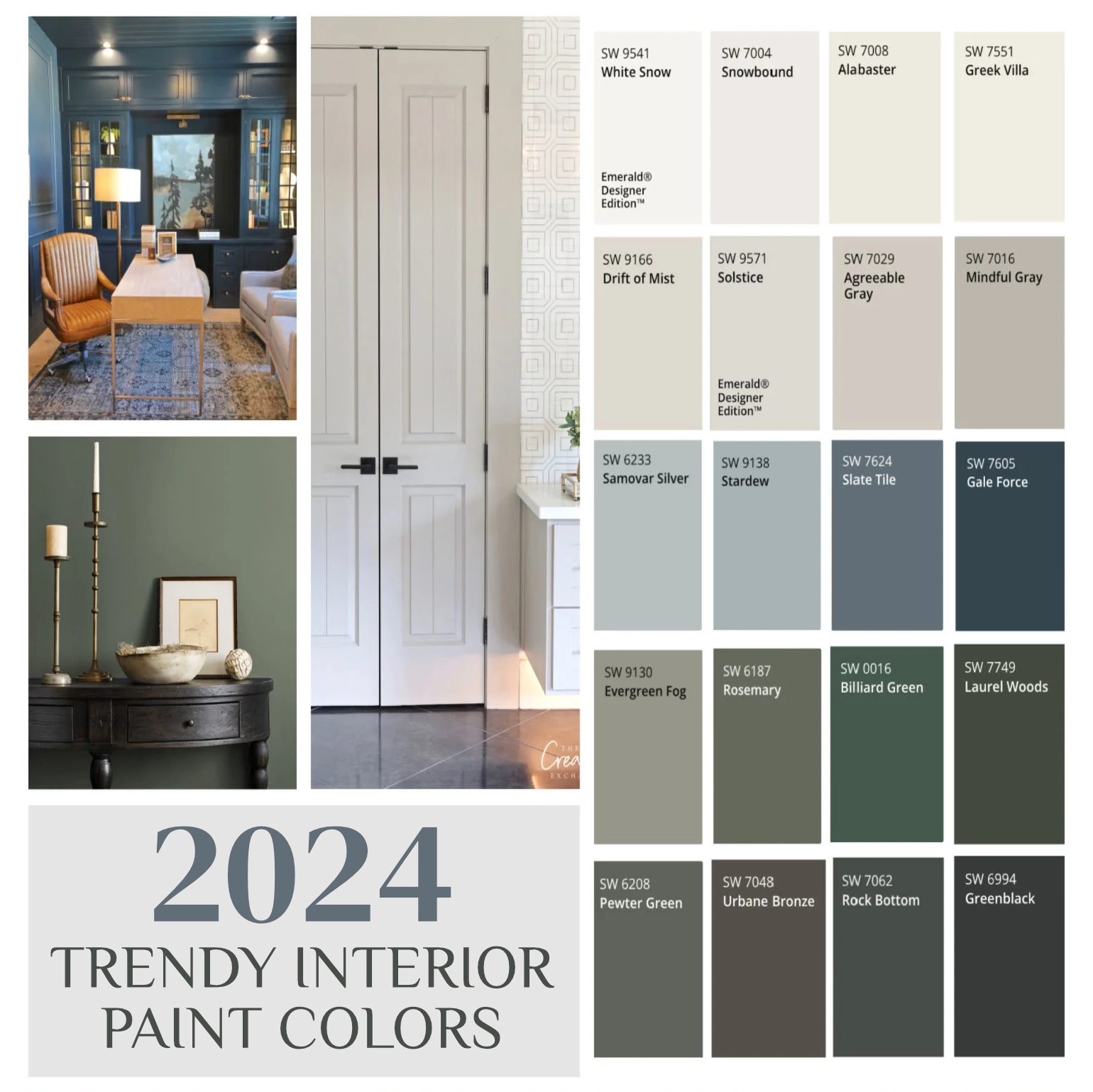
Cabinet Styles and Finishes
Cabinets are one of the most prominent features in a kitchen, and choosing the right style and finish can significantly impact the overall look of your space. In addition to Shaker-style cabinets, which continue to be a favorite, the use of natural materials like wood and stone is on the rise. These materials contribute to a warm and inviting space that integrates a touch of nature.
Here’s a snapshot of popular cabinet styles and finishes:
| Cabinet Style | Finish | Description |
|---|---|---|
| Shaker | Natural wood or painted | Timeless design with recessed panel doors |
| Flat-front | High-gloss or matte | Sleek and modern with a minimalist look |
| Glass-front | Clear or frosted | Elegant and ideal for displaying dishware |
Whether you opt for the timeless simplicity of Shaker cabinets or the sleek appeal of flat-front designs, the finish you choose can define the ambiance of your kitchen. High-gloss finishes can reflect light and create a sense of space, while matte and natural wood finishes offer a more subdued and organic feel.
For expert guidance on selecting the best cabinet styles and finishes for your home, consider reaching out to home renovation contractors who specialize in kitchen upgrades.
By carefully considering these aesthetic elements, you can ensure that your kitchen not only functions well but also aligns with your personal tastes and the latest design trends. Remember, a well-designed kitchen can enhance your home’s overall appeal, whether you’re preparing a family meal or entertaining guests.
Energy Efficiency and Savings
In the realm of kitchen remodeling, an important aspect that combines cost-effectiveness with environmental responsibility is the focus on energy efficiency and sustainability. As you embark on your kitchen renovation, considering the long-term impact on both your utility bills and the planet is crucial.
Upgrading to Energy-Smart Appliances
One of the most significant steps you can take towards a greener kitchen is upgrading old, outdated appliances to new, energy-efficient models. Energy-efficient appliances are not only a wise choice to help reduce your energy costs but also add to the overall sustainability of your kitchen space.
| Appliance | Estimated Energy Savings |
|---|---|
| Refrigerator | Up to 20% |
| Dishwasher | 10-30% |
| Oven | 5-15% |
By choosing appliances with the ENERGY STAR label, you ensure that you are investing in products that meet strict energy efficiency guidelines set by the U.S. Environmental Protection Agency. These modern appliances are designed to use less water and energy without sacrificing performance.
When selecting new appliances, consider the size and features that align with your needs. Oversized appliances not only take up more space but may also consume more energy than necessary for your household. Moreover, features like programmable settings can contribute to further energy savings.
Remember, while the upfront cost of these appliances might be higher, the long-term savings on your utility bills can be substantial. For those interested in other areas of home improvements that can enhance energy efficiency, consider exploring bathroom renovation and basement remodeling opportunities.
Sustainable Material Choices
Incorporating natural materials like wood and stone into your kitchen design not only contributes to a visually appealing space but also supports sustainability. These materials are durable, timeless, and can often be sourced locally, reducing the environmental impact associated with transportation.
| Material | Sustainability Feature |
|---|---|
| Bamboo | Fast-growing and renewable |
| Recycled Glass | Reduces waste in landfills |
| Reclaimed Wood | Prevents deforestation |
The use of sustainable furnishing materials is a rising trend in kitchen renovations, emphasizing eco-friendly and renewable resources. This not only helps in minimizing the kitchen’s ecological footprint but also brings a unique, organic aesthetic to your home.
Consider options such as bamboo for flooring or cabinetry, which is known for its rapid growth rate and durability. Additionally, countertops made from recycled glass or reclaimed wood can add character to your kitchen while being kind to the environment.
Working with home renovation contractors who specialize in eco-friendly renovations can help you make informed decisions about sustainable materials and practices. They can guide you towards suppliers that offer green products and ensure that your renovation meets environmental standards.
By prioritizing energy efficiency and sustainable material choices in your kitchen remodeling project, you not only create a beautiful space but also contribute positively to the environment and enjoy cost savings. For more inspiration on incorporating eco-friendly solutions into your home, browse through a variety of home renovation ideas.
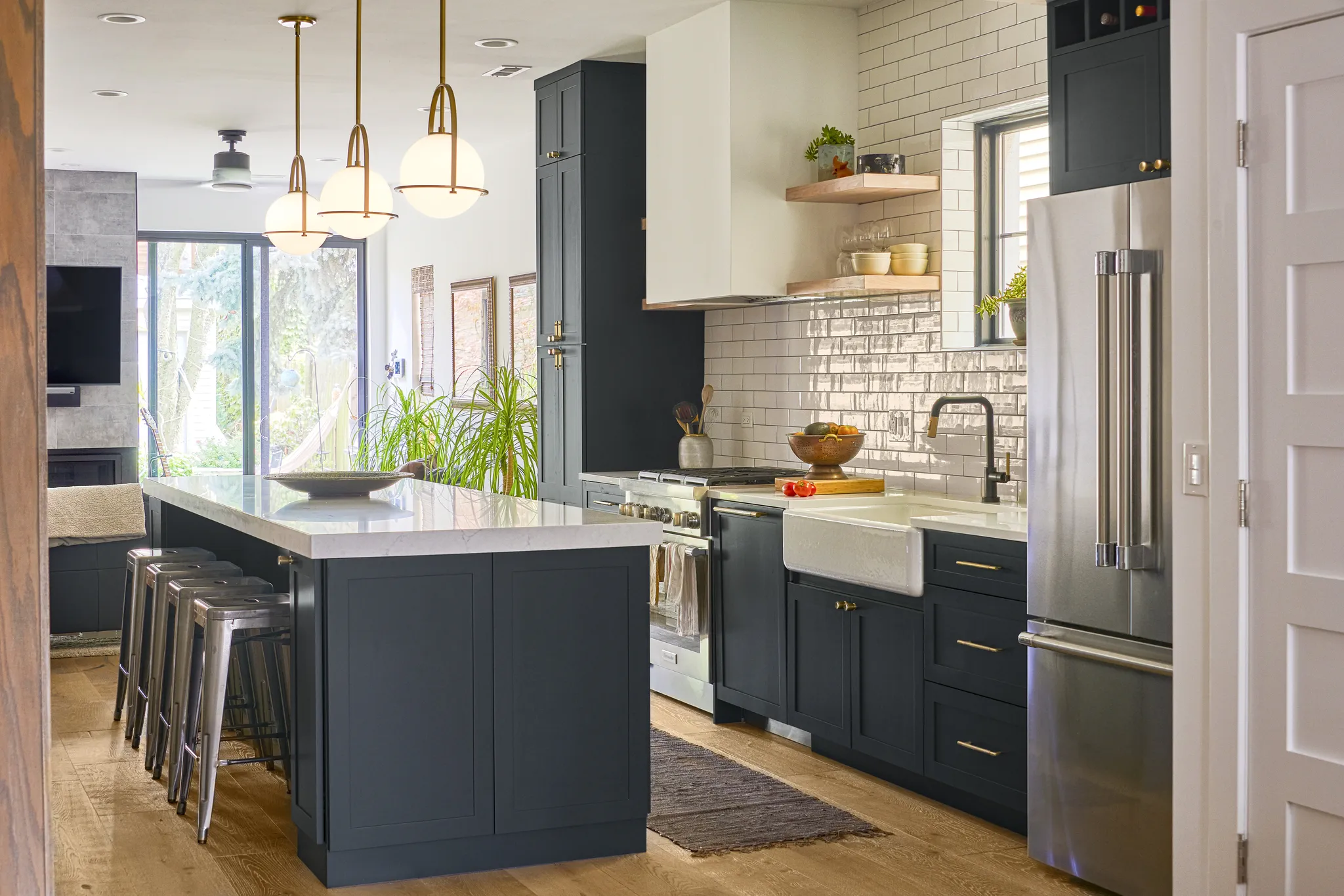
The Value of Remodeling
When considering a home improvement project, kitchen remodeling stands out as a significant investment that not only rejuvenates the heart of your home but also can offer substantial financial rewards.
ROI on Kitchen Upgrades
A kitchen overhaul is more than just a facelift; it’s a financial strategy. According to recent data, a moderate kitchen remodel can recoup about 78.3% of its cost in added value, while a comprehensive, upscale renovation may yield a return of approximately 59%. These figures underscore the importance of balancing your personal preferences with market trends to maximize your investment.
| Remodel Type | Average ROI |
|---|---|
| Minor Kitchen Remodel | 81% |
| Major Upscale Kitchen Remodel | 53.9% |
| Moderate Kitchen Remodel | 78.3% |
It’s important to note that these are national averages, and the actual return on investment can vary based on your local real estate market and the specifics of the renovation. To ensure the best possible outcome, consider consulting with home renovation contractors who have experience in maximizing kitchen remodel ROIs.
Realistic Kitchen Project Scheduling
When planning your kitchen remodel, it’s crucial to establish a realistic timeline that takes into consideration various factors such as material availability, labor coordination, and the complexity of the work to be done. Here’s a typical breakdown of stages and durations to give you an idea of what to expect:
| Phase | Duration |
|---|---|
| Design and Planning | 4-6 weeks |
| Permitting | 2-4 weeks |
| Ordering and Delivery of Materials | 4-8 weeks |
| Demolition and Construction | 6-12 weeks |
| Final Touches and Cleanup | 1-2 weeks |
Keep in mind that these timeframes are estimates and can vary based on the scope and scale of your project. Unforeseen challenges, such as structural issues or delays in material shipments, can also impact the timeline. It is important to factor in some buffer time to address any unexpected situations that may arise.
To help manage the renovation process effectively, consider utilizing project management tools or apps that can help you keep track of tasks and deadlines. Regularly communicating with your contractor or designer will also ensure that any delays are addressed promptly, keeping your project on track.
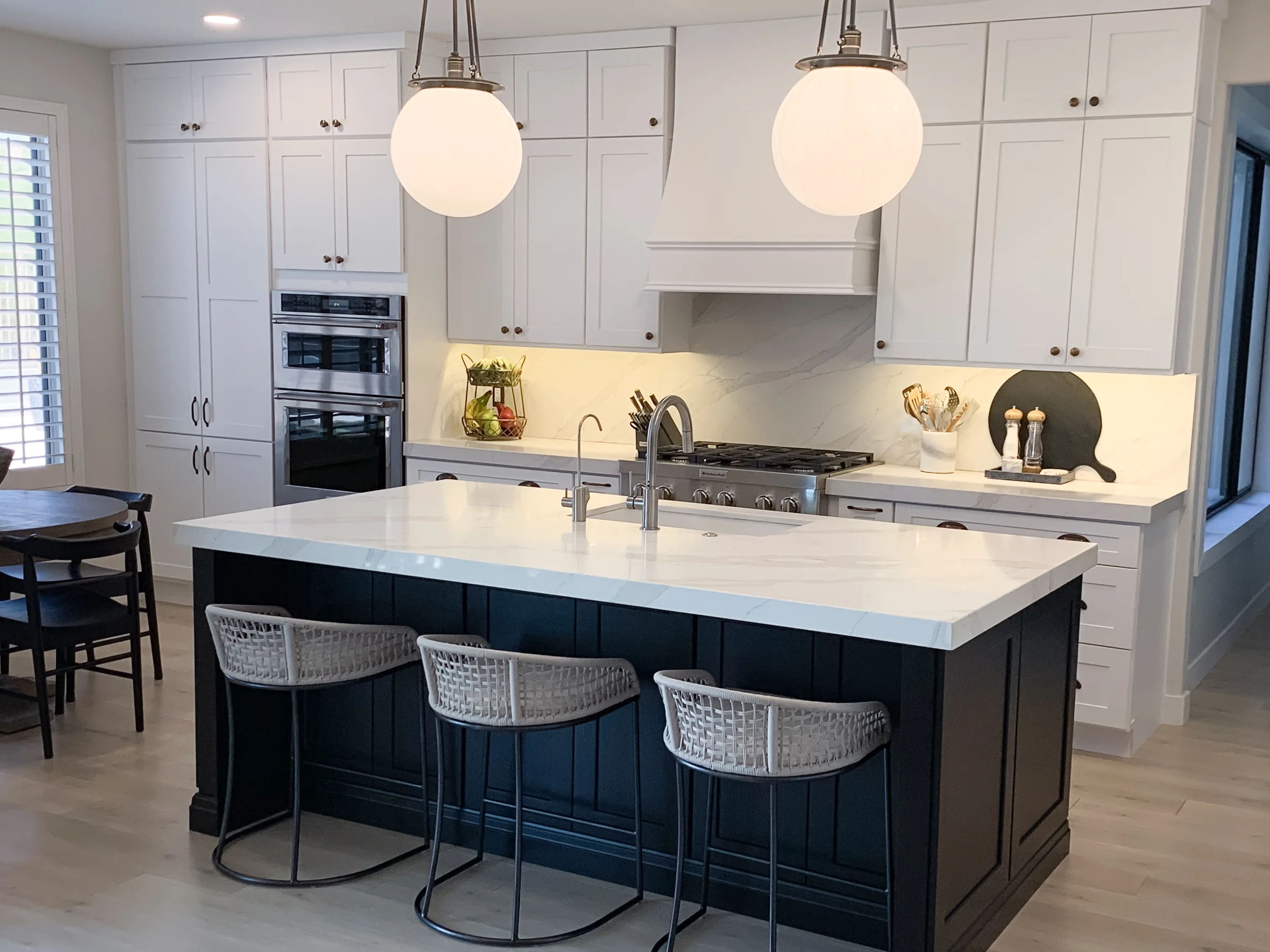
Incorporating Unique Features
The key to making your kitchen remodeling project stand out is in the details. Unique features such as freestanding furniture pieces or vintage-style elements can infuse your space with personality and warmth. In recent years, there’s been a resurgence of traditional craftsmanship and artisanal finishes, allowing homeowners to integrate bespoke touches into their kitchens.
Consider these trending elements for adding individuality to your kitchen:
- Freestanding Kitchen Furniture: Pieces that can be moved or repurposed provide flexibility and a vintage charm.
- Statement Lighting: Distinctive fixtures are not only functional but also serve as art pieces.
- Artisanal Finishes: Handcrafted tile work or custom woodwork can introduce an element of craftsmanship.
- Mixing Metals: Combining different metals like brass and matte black can create an eclectic, yet cohesive look.
| Feature | Description |
|---|---|
| Freestanding Furniture | Adds flexibility and vintage charm |
| Statement Lighting | Serves as both functional and art piece |
| Artisanal Finishes | Introduces craftsmanship and uniqueness |
| Mixing Metals | Creates depth and visual interest |
Source: HGTV
Embracing Technology in Design
The modern kitchen is not only about aesthetics but also about incorporating technology to enhance functionality. Smart appliances are becoming increasingly popular, providing convenience and efficiency through features like touchless technology and voice control.
Here are some tech-forward features to consider:
- Smart Refrigerators: These can track expiration dates, create shopping lists, and integrate with your smartphone.
- Programmable Coffee Makers: Set your morning brew to be ready when you wake up.
- Touchless Faucets: Reduce the spread of germs and make cleanup easier.
- Voice-Controlled Devices: Manage your kitchen appliances with simple voice commands.
Embracing modern kitchen technology not only adds convenience to your daily life but can also contribute to the overall value of your home. By adding personalized features and embracing innovative technology, you can create a kitchen space that is not only modern and functional but also a true reflection of your personal style and preferences.
When planning your kitchen remodel, consider working with reputable contractors who specialize in integrating technology into home design. They can provide valuable insights and ensure that all your tech additions are seamlessly incorporated into your new kitchen.
Working with Professionals
Selecting the right team is pivotal for the success of your kitchen remodeling venture. Hiring experienced renovation contractors or a kitchen designer can streamline the entire process from conceptual design to completion. These experts can provide accurate estimates on both timelines and costs, manage the project efficiently, and ensure that your vision for the space is realized.
Professionals in the field of kitchen renovation understand the intricacies of such projects, including obtaining the necessary permits and scheduling inspections. They can foresee potential obstacles and plan accordingly to mitigate them.
Here are some tips for working with renovation professionals:
- Vet Your Contractors: Research and select contractors with proven expertise in kitchen remodeling. Check their references, portfolio, and reviews to ensure their work aligns with your expectations.
- Clear Communication: Establish open lines of communication. Discuss your expectations, concerns, and any changes in the project scope promptly.
- Understand Your Contract: Ensure all details are outlined in the contract, including the scope of work, timeline, payment schedule, and process for change orders.
- Stay Involved: While your contractor will handle the day-to-day management, stay engaged with the project’s progress. Regular check-ins can help catch issues early on.
Remember, whether you’re considering a bathroom renovation or condo remodeling, the principles of effective project management remain the same: plan thoroughly, communicate clearly, and work with professionals to bring your vision to life.
Whether you’re looking to add value to our home or create a cozy gathering place for family and friends, these final touches will ensure our kitchen is both beautiful and functional. Not sure where to start? Contact us for a free consultation and estimate for your kitchen.
